Agricultural Technology
January 02, 2018
Technology has played a big role in developing the agricultural industry. Today it is possible to grow crops in a desert with the help of agricultural technology. With this technology, plants have been engineered to survive in drought conditions. Through genetic engineering scientists have managed to introduce traits into existing genes with a goal of making crops resistant to droughts and pests. Modern farms and agricultural operations work far differently than those a few decades ago, primarily because of advancements in technology, including sensors, devices, machines, and information technology. Today’s agriculture routinely uses sophisticated technologies such as robots, temperature and moisture sensors, aerial images, and GPS technology. These advanced devices and precision agriculture and robotic systems allow businesses to be more profitable, efficient, safer and more environmental friendly.
Importance of Agricultural Technology
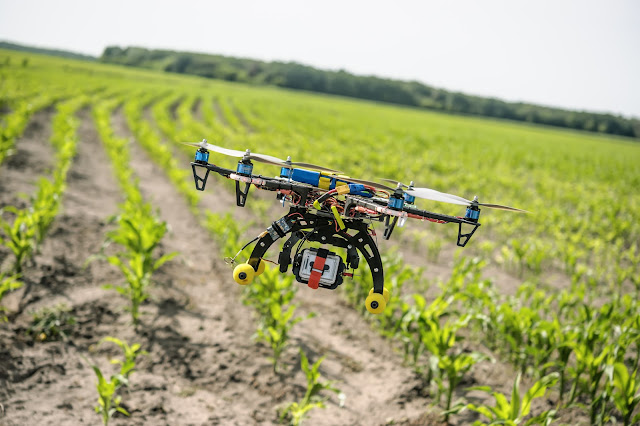 |
| Drone monitoring all the activities in the farm using the sensors attached to it |
Farmers no longer have to apply water, fertilizers, and pesticides uniformly across entire fields. Instead, they can use the minimum quantities required and target very specific areas, or even treat individual plants differently.
Benefits include:
- Higher crop productivity
- Decreased use of water, fertilizer, and pesticides, which in turn keeps food prices down
- Reduced impact on natural ecosystems
- Less runoff of chemicals into rivers and groundwater
- Increased worker safety
In addition, robotic technologies enable more reliable monitoring and management of natural resources, such as air and water quality. It also gives producers greater control over plant and animal production, processing, distribution, and storage, which results in:
- Greater efficiencies and lower prices
- Safer growing conditions and safer foods
- Reduced environmental and ecological impact
Where exactly this technology is used?
Use of machines on farms:
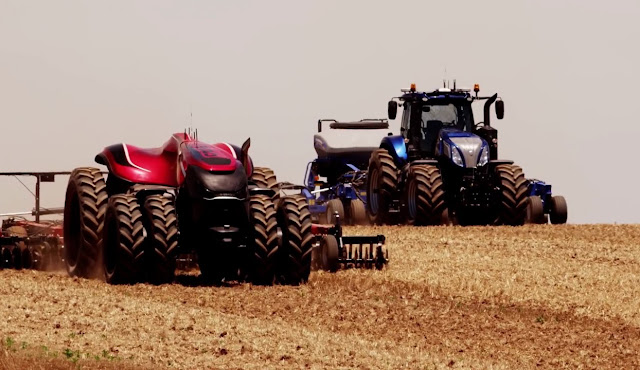 |
| A normal tractor with an Autonomous tractor[Red] ploughing the field |
Now a farmer can cultivate on more than 2 acres of land with less labor, and can cut costs even more when they are looking for a used tractor and other harvesting technology, versus new equipment. The use of planters and harvesters makes the process so easy. In agriculture, time and production are so important; you have to plant in time, harvest in time and deliver to stores in time. Modern agricultural technology allows a small number of people to grow vast quantities of food and fiber in a shortest period of time.
Modern transportation:
 |
| A truck carrying Hay |
This helps in making products available on markets in time from the farm. With modern transportation, consumers in Dubai will consume fresh carrots from Africa with in the same day that carrot lives the garden in Africa.
Modern transportation technology facilities help farmers easily transport fertilizers or other farm products to their farms, and it also speeds the supply of agricultural products from farms to the markets where consumers get them on a daily basis.Cooling facilities:
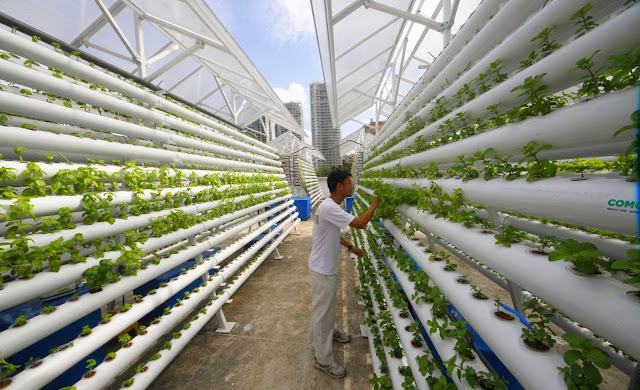 |
| Worker inspecting the plant growth |
These are used by farmers to deliver tomatoes and other perishable crops to keep them fresh as they transport them to the market. These cooling facilities are installed in food transportation trucks, so crops like tomatoes will stay fresh upon delivery. This is a win-win situation for both the consumers of these agricultural products and the farmers. How? the consumers gets these products while still fresh and the farmer will sell all their products because the demand will be high.
Genetically produced plants:
 |
| Plants grown in trays with temperature maintained at optimum |
Genetically produced plants like potatoes, can resist diseases and pests, which rewards the farmer with good yields and saves them time. These crops grow very fast they produce healthy yields. Since they are resistant to most diseases and pests, the farmer will spend less money on pesticides, which in return increases on their (RIO) return on investment.
Development of animal feeds:
 |
| Cattle eating Animal feeds |
This has solved the problem of hunting for grass to feed animals, now these feeds can be manufactured and consumed by animals. The price of these feed is fair so that a low income farmer can afford them. Most of these manufactured animal feeds have extra nutrition which improves on the animal’s health and the output of these animals will also increase.
In agriculture, the health of an animal will determine its output. Poorly feed animals are always unhealthy and they produce very little results in form of milk, meat, or fur.Breeding of animals which are resistant to diseases:
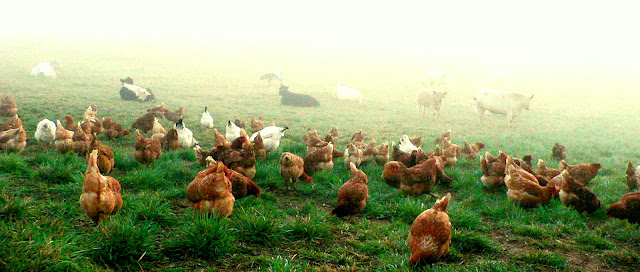 |
| Cattle and Chicken roaming freely in a farm |
Most of these genetically produced animals will produce more milk or fur compared to normal animals. This benefits the farmer because their production will be high. Cross breeding is very good in animal grazing; cross breed animals are more strong and productive.
Irrigation of plants:
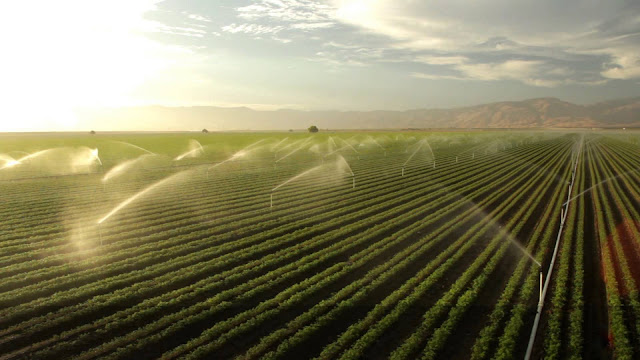 |
| Farm irrigated using modern sprinkler system |
In dry areas like deserts, farmers have embraced technology to irrigate their crops. A good example is in Egypt, were farmers use water pumps to collect water from river Nile to their crops. Most of these farmers grow rice which needs a lot of water, so they manage to grow this rice using irrigation methods enhanced by advanced technology. Advanced water sprinklers are being used to irrigate big farms and this helps the crops get enough water which is essential in their growth. Some farmers mix nutrients in this water, so also improves on the growth of these crops.
With the amount of technology, in agriculture, you can see a number of advantages. Hence farmers all over the world are adopting these technologies. The efforts of farmers, expenditure and the amount of time are also at the decreasing level. The scientists are trying their might to decrease disadvantages of technology in agriculture.





0 comments